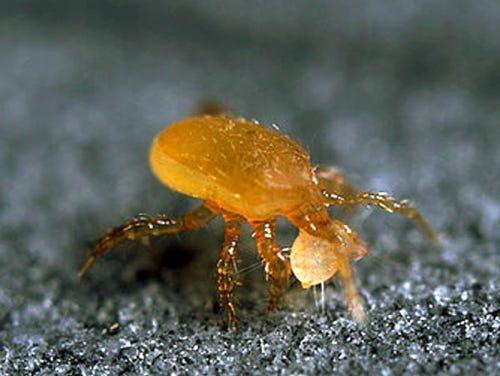Life cycle of the Predatory Mite?
An adult predatory mite lives an average of 6 weeks and is active at temperatures ranging from 10°C to 30°C. A population of this predatory mite consists of both males and females. When there is enough to eat the females lay eggs frequently, the eggs are oval shaped. The eggs hatch within 2-3 days and the young predatory mite nymphs are born. The nymphs develop into an adult predatory mite in about 5 to 6 days. The young nymphs are immediately after birth fierce predators that consume eggs and small larvae of various insects. An adult Stratiolaelaps Scimitus can consume up to 5 preys per day.



